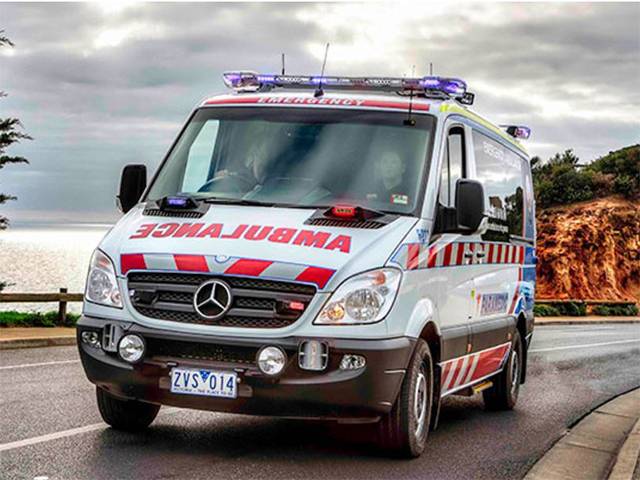Ambulance Response Times in Victoria

More paramedics, more services to meet record demand for care
Ambulance Victoria will recruit hundreds of paramedics and establish a new medium acuity transport service to meet record demand.
Secondary triage and telehealth mental health services, which both free up ambulances for emergencies by connecting patients with the help they need, will also be expanded as part of a $759 million state government investment.
More than 300 paramedics and registered nurses will join Ambulance Victoria in the next 12 months.
Paramedics attended 84,441 time-critical cases between April and June, the highest demand on record for this time of year, and the second highest quarterly result in Victoria's history.
Demand for emergency assistance has been steadily climbing, with the latest performance data revealing a 29% increase in Code 1 cases over the past four years (compared with Quarter 4 2016/17).
From April to June, paramedics attended 73.1% of Code 1 cases within 15 minutes, with a state-wide average response time of 13 minutes and 44 seconds.
Ambulance Victoria CEO Tony Walker said the latest performance data paints a clear picture of an entire health system under incredible pressure due to the COVID-19 pandemic.
"There's no denying we are experiencing an extraordinary workload – the highest we've ever seen for this time of year," Professor Walker said.
"From April to June we responded to an extra 3000 Code 1 cases than the previous three months, and this unprecedented increase in workload is being experienced right across the healthcare system.
"This is leading to congestion at hospitals, with lengthening transfer times at emergency departments impacting on our crews being available to respond to the next person in need."
Professor Walker said several factors were contributing to the enormous demand.
"We know that there are tens of thousands of extra Victorians in the state who would otherwise be elsewhere as a result of the pandemic," he said.
"There are also those with chronic conditions who were reluctant to visit their GP or specialists during lockdown who are now finding themselves more unwell and in need of urgent care."
Along with the huge increase in time-critical cases, more than 37,000 calls to Triple Zero last quarter did not require an emergency response. A further 20,000 patients who received an ambulance did not require transport to hospital.
"Every call we get that is not an emergency impacts on our ability to get to people in the community who need us the most," Professor Walker said.
"We are asking every Victorian to work with us by saving Triple Zero for emergencies and seeing your GP or pharmacist early for advice or treatment."
Professor Walker said state government funding in the next 24 months would be used to bolster paramedic resources and implement demand easing initiatives across the state.
These include:
- Recruitment of 56 on-road paramedics in rural Victoria for the conversion of four locations to 24-hour operations and four Peak Period Units (ambulance services that operate during the busiest periods each day).
- A new medium acuity internal patient transport resource, supported by 22 vehicles and 165 staff to provide care for Code 2 and 3 patients.
- Expansion of AV's Referral Service, which connects Triple Zero (000) callers who do not need an ambulance with alternative care through secondary triage, including recruitment of 57 extra paramedics and registered nurses.
- An extra three staff to expand the state-wide 24-hour mental health service that connects paramedics with mental health clinicians via telehealth, enabling better care for mental health patients.
- Adding 30 staff to both Metro and Rural Communications areas to support the expanded paramedic workforce.
"This is great news for Ambulance Victoria and the community we serve," Professor Walker said.
"Demand growth and COVID-19 have placed sustained pressure on performance and our people.
"This funding package addresses the challenges we have today related to performance, to workload and demand, and to meeting the ever-more complex needs of the community.
"It does so in the most direct way possible; by enabling our paramedics, clinicians and call centres to do their jobs better, and by providing new resources where they are needed most.
"It assists with new on-road resources to address emergency workload and provides additional paramedic resources and vehicles.
"Adding significant new resources to Operational Communications and our Referral and Telehealth services will have flow-on benefits for the entire organisation and our patients.
"We also need to be realistic. This is not an overnight fix. The challenges we face are complex, however we have a clear plan and significant state government funding to improve our response performance."
Photo: Ambulance.vic.gov.au
MORE



